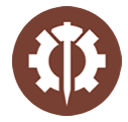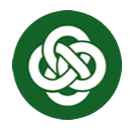Glossaire Altered
Nombre d'entrées : 10
Voir les sources du contenu
2.2.8 Faction
2.2.8.a Une faction est l'une des suivantes : Axiom  , Bravos
, Bravos  , Lyra
, Lyra  , Muna
, Muna  , Ordis
, Ordis  , Yzmir
, Yzmir  .
.
2.2.8.b Certains objets n'ont pas de faction. Ils sont appelés neutres.
2.2.8.c La faction d'un objet représenté par une carte est définie par son symbole de faction et sa couleur de fond.
2.2.8.d Les jetons, réactions et emblèmes n'ont pas de faction.
7.1.3 Symbole de faction
7.1.3.a Le symbole  représente la faction Axiom.
représente la faction Axiom.
7.1.3.b Le symbole  représente la faction Bravos.
représente la faction Bravos.
7.1.3.c Le symbole  représente la faction Lyra.
représente la faction Lyra.
7.1.3.d Le symbole  représente la faction Muna.
représente la faction Muna.
7.1.3.e Le symbole  représente la faction Ordis.
représente la faction Ordis.
7.1.3.f Le symbole  représente la faction Yzmir.
représente la faction Yzmir.
1.1.4 Jeu construit
1.1.4.a En jeu construit, un joueur peut utiliser n'importe quelle carte de sa collection pour constituer son deck.
1.1.4.b Un deck construit doit inclure exactement 1 Héros.
1.1.4.c Un deck construit doit inclure au moins 39 autres cartes.
1.1.4.d Un deck construit ne peut inclure que des cartes de la même faction que son Héros.
1.1.4.e Un deck construit ne peut inclure que 3 cartes portant le même nom.
Remarque : dans Altered, contrairement à de nombreux autres jeux de cartes à collectionner, des cartes portant le même nom peuvent avoir des caractéristiques, des raretés et des factions différentes. Un joueur lors d'un événement construit doit préciser quelle version d'une carte il joue.
1.1.4.f Un deck construit peut inclure au maximum 15 cartes rares ( ).
).
1.1.4.g Un deck construit peut inclure au maximum 3 cartes uniques ( ).
).
Pour plus de détails, voir Standard (Mode de jeu) ou Multijoueur 2v2 (Mode de jeu)
1.1.5 Jeu limité
1.1.5.a En jeu limité, les joueurs doivent construire leur deck à partir d'un pool de cartes restreint qui leur est fourni pour un événement spécifique, ainsi que d'un nombre illimité de cartes Convergences de Mana.
1.1.5.b Un deck limité peut inclure au maximum 1 Héros.
1.1.5.c Un deck limité doit inclure au moins 29 autres cartes.
1.1.5.d Un deck limité ne peut inclure des cartes que de 3 factions maximum ; si ce deck inclut un Héros, la faction de ce Héros compte comme l'une des trois factions.
Remarque : Un deck limité n'a pas de restrictions en terme de nombre de cartes avec le même nom ou de rareté.
Pour plus de détails, voir Draft de Boosters (Mode de jeu)
Une autre variante non officielle de jeu limité est le Draft de Boosters (Mode de jeu) proposé par Merlin, game designer de Equinox.
1.2.2 Objets
1.2.2.a Les objets sont les pièces du jeu d'Altered.
1.2.2.b La plupart des éléments dans une partie d'Altered sont des objets, des propriétés d'objets, ou des ensembles d'objets.
1.2.2.c Les objets ont des caractéristiques :
- Type (Personnage, Emblème, Héros, Permanent, Région, Sort)
- Sous-type
- Nom
- Rareté (commune
 , rare
, rare  , unique
, unique  )
) - Version
- Coût de la main
- Coût de la réserve
- Faction (Axiom
 , Bravos
, Bravos  , Lyra
, Lyra  , Muna
, Muna  , Ordis
, Ordis  , Yzmir
, Yzmir  )
) - Statistiques (un nombre pour chaque
,
,
)
- Capacités
- Limite de réserve (seulement pour les Héros)
- Limite de repère (seulement pour les Héros)
- Durée (seulement pour les Emblèmes)
1.2.2.d Un objet peut ne pas avoir certaines de ces caractéristiques.
2.2.11 Limite de Réserve
2.2.11.a La limite de réserve est un nombre.
2.2.11.b Seuls les Héros ont une limite de réserve.
2.2.11.c La limite de réserve d'un Héros est représentée par un certain nombre de rectangles sous l'illustration et à gauche du symbole de faction du Héros.
2.2.12 Limite de Point de Repère
2.2.12.a La limite de point de repère est un nombre.
2.2.12.b Seuls les Héros ont une limite de point de repère.
2.2.12.cLa limite de point de repère d'un Héros est représentée par des rectangles à droite du symbole de faction du Héros.
Draft de Boosters (Mode de jeu)
Le Draft de Boosters se joue en 1 contre 1, et le nombre de joueurs recommandé est de 8. Chaque joueur reçoit 4 boosters Altered. Les joueurs ouvrent leur premier booster, retirent la carte Jeton/Foiler, choisissent une carte et passent le reste du booster à la personne à leur gauche. Le processus est répété jusqu'à ce que toutes les cartes soient sélectionnées. Les mêmes étapes sont suivies pour les autres boosters, en alternant les directions de passage (gauche-droite-gauche-droite). Les decks doivent contenir au moins 30 cartes suivant les règles de construction de deck.
Construction de deck :
Les decks construits à partir du Draft de Boosters doivent respecter les directives suivantes :
- Un deck doit contenir un minimum de 30 cartes.
- Les cartes Jeton ne comptent pas dans le minimum du deck. Si vous avez des cartes Jeton pour accompagner votre deck, elles commencent en dehors de votre deck.
- Vous pouvez jouer des cartes de jusqu'à trois factions différentes.
- Un deck peut inclure une carte Héros. Si c’est le cas, elle compte dans le minimum de 30 cartes.
- Votre Héros doit appartenir à l'une des factions de votre deck.
- Vous pouvez choisir de ne pas jouer de carte Héros.
- Il n’y a aucune restriction sur le nombre de cartes portant le même nom que vous pouvez jouer dans votre deck.
- Il n’y a aucune restriction sur le nombre de cartes rares
 ou uniques
ou uniques  que vous pouvez jouer dans votre deck.
que vous pouvez jouer dans votre deck.
Structure : Meilleur d'une manche
Nombre de manches : 3
Temps pour le draft et la construction du deck : 40 minutes
Temps de manche : 30 minutes
Nombre de joueurs : 8
Dois-je jouer une carte Héros dans mon deck ?
Il n'est pas obligatoire de jouer une carte Héros dans les formats limités comme le Draft de Boosters, mais il est souvent préférable d'en jouer une dans l'une des factions de votre deck plutôt que de ne pas en jouer du tout.
Puis-je changer mon deck entre les parties ?
Les joueurs peuvent librement modifier leur deck en utilisant leur réserve de cartes draftées entre les parties lorsqu'ils jouent dans des formats limités.
Quand dois-je scanner mes cartes et les ajouter à ma collection numérique ?
Après la phase de draft, pendant la construction du deck, sauf indication contraire de l'organisateur du draft.
Que se passe-t-il si je n'ai pas assez de cartes pour un deck de 30 cartes, et que je n'ai pas assez de jetons de Convergence de Mana ?
Vérifiez auprès de l'organisateur du tournoi s'il a des jetons supplémentaires. Si vous n’êtes pas en mesure d’en trouver, utilisez d'autres jetons comme substituts.
Multijoueur 2v2 (Mode de jeu)
Le mode multijoueur est une façon amusante et plus sociale de jouer à Altered, où vous pouvez jouer à plus de 2 joueurs. Il s'agit d'un format construit, ce qui signifie que vous devez construire un deck à l'avance et l'apporter au jeu.
Le mode multijoueur peut être joué de plusieurs manières :
En 2v2, vous et votre coéquipier affrontez une autre équipe, et l'équipe dont le Héros et le Compagnon se rencontrent en premier gagne la partie.
Chacun pour soi Free for All, vous affrontez tous les autres joueurs, mais vous ne pouvez faire la course qu'avec deux d'entre eux : le joueur à votre droite et le joueur à votre gauche.
Vous gagnez lorsque vous êtes le premier à faire se rencontrer votre Héros et votre Compagnon.
Règles de construction de deck en mode multijoueur
Les decks multijoueurs dans Altered suivent les règles de construction de deck standard. Les joueurs peuvent jouer avec n'importe quel Héros de leur choix, ce qui signifie que deux joueurs peuvent choisir le même Héros.
- Un deck doit contenir au minimum 39 cartes non-Héros plus exactement 1 carte Héros.
- Les cartes Jeton ne comptent pas dans le minimum du deck. Si vous avez des cartes Jeton, elles commencent en dehors de votre deck.
- Toutes les cartes de votre deck doivent appartenir à la même faction que votre carte Héros.
- Vous pouvez avoir un maximum de 3 exemplaires d'une carte portant le même nom, quelle que soit sa rareté.
- Vous pouvez avoir un maximum de 15 cartes Rares
 dans votre deck.
dans votre deck.
Vous pouvez avoir un maximum de 3 cartes Uniques dans votre deck.
dans votre deck.
2v2
Le mode 2v2 est un mode à quatre joueurs, avec deux équipes de deux joueurs.
Mise en place d'une partie multijoueur Altered en 2v2
- Formez deux équipes, les joueurs de la même équipe étant assis en face les uns des autres.
- Déterminez ensuite au hasard le premier joueur.
- Placez deux cartes de la Région du Héros en face l'une de l'autre. Faites de même avec les cartes de la Région du Compagnon.
- Prenez deux ensembles de cartes Tumulte. Formez trois piles, chacune contenant deux cartes Tumulte identiques, puis mélangez les trois piles.
- Prenez la première pile : placez une carte à côté de la carte Héros, et l'autre à côté de l'autre carte Héros. Faites de même avec la deuxième pile à côté des cartes Compagnon. Placez les deux dernières cartes au centre, côte à côte.
Vous pouvez maintenant commencer la première journée. Les joueurs jouent chacun leur tour dans le sens des aiguilles d'une montre jusqu'à ce que tout le monde ait passé.
Chaque joueur fait face à un adversaire différent pour chacune de ses Expéditions.
Lorsqu'un joueur atteint l'une des cartes Tumulte centrales, retournez les deux cartes face visible. Placez la deuxième carte dans la direction opposée à la première, de sorte que les deux types de région uniques soient de chaque côté.
Les marqueurs d'Expéditions continuent à se déplacer l'un vers l'autre, suivant le chemin indiqué.
Conditions de victoire
Le premier joueur dont les Expéditions de Héros et de Compagnon se rencontrent dans la même Région gagne la partie pour son équipe.
Si deux joueurs d'équipes différentes remplissent les conditions de victoire en même temps, vérifiez d'abord si l'un des joueurs a avancé plus loin que nécessaire. Si c'est le cas, son équipe gagne la partie ; sinon, jouez une journée de départage dans l'Arène.
Si trois joueurs remplissent les conditions de victoire, les deux joueurs alliés remportent la partie.
Si les quatre joueurs remplissent les conditions de victoire et qu'une équipe a au moins une avance supplémentaire par rapport à l'autre, cette équipe gagne la partie ; sinon, jouez une journée de départage dans l'Arène.
Départage
Jouez une journée supplémentaire avec la modification suivante de la règle : pendant le Crépuscule, chaque équipe totalise les statistiques de ses Personnages pour chaque type de Région de l'Arène (Forêt, Montagne et Eau). L'équipe qui l'emporte sur son adversaire dans le plus de types de régions gagne la partie.
En cas d'égalité supplémentaire, jouez une nouvelle journée de départage jusqu'à ce qu'une équipe soit déclarée vainqueur.
Effets du premier joueur
Les effets qui s'activent si vous êtes le premier joueur (Akesha & Taru, Kojo & Booda, Lindiwe & Maw) s'activent si l'un des membres de l'équipe possède le jeton du premier joueur.
Interactions avec votre coéquipier
Il est interdit de montrer votre main de cartes à votre coéquipier.
La communication entre les joueurs (et ses limites) peut varier selon le contexte. Un tournoi peut interdire toute forme de communication, tandis qu'une autre table peut autoriser toute information à condition qu'elle soit transparente et compréhensible par les deux équipes. Certains permettent encore des messages codés. Les joueurs doivent s'assurer d'un accord au début de la partie.
Il n'est pas possible de jouer directement une carte dans l'Expédition ou la Zone de Repère de votre coéquipier. Cependant, certains effets ou capacités peuvent permettre de créer des jetons, par exemple.
Clarifications
Lorsqu'une carte mentionne « expédition ciblée » ou « personnage ciblé », cela peut faire référence à toute Expédition ou tout Personnage allié ou ennemi.
Lorsqu'une carte mentionne « dans votre Expédition » ou un Personnage « que vous contrôlez », cela ne s'applique qu'à votre côté du plateau, et non à celui de votre coéquipier.
Lorsqu'une carte mentionne « adversaire ciblé », choisissez l'un de vos adversaires.
Lorsqu'une carte mentionne « votre adversaire », elle fait référence à chacun de vos adversaires.
Vous ne pouvez sacrifier que des cartes que vous contrôlez, et non celles contrôlées par votre coéquipier.
Standard (Mode de jeu)
Le format Standard est un mode de jeu dans lequel les joueurs construisent un deck à l'avance et l'apportent au jeu. Les joueurs choisissent leur Héros ou leur faction préférée et construisent un deck en suivant les stratégies qui leur plaisent le plus. Le Standard est l'expérience classique d'Altered, recommandée pour les nouveaux joueurs et les tournois. Ce format nécessite que les joueurs apportent leur propre deck à tout événement.
Le format Standard se joue en 1 contre 1. Un événement Standard peut accueillir un nombre quelconque de joueurs. Les deux joueurs doivent avoir un deck qui respecte les règles de construction de deck spécifiques à ce format.
Les decks Standard dans Altered doivent respecter les directives suivantes :
- Un deck doit contenir un minimum de 39 cartes non-Héros plus exactement 1 carte Héros. (Les cartes Jeton ne comptent pas dans le minimum du deck. Si vous avez des cartes Jeton à utiliser avec votre deck, elles commencent en dehors de votre deck.)
- Toutes les cartes de votre deck doivent appartenir à la même faction que votre carte Héros.
- Vous pouvez avoir un maximum de 3 exemplaires d'une carte portant le même nom, quelle que soit sa rareté.
- Vous pouvez avoir un maximum de 15 cartes Rares
 dans votre deck.
dans votre deck. - Vous pouvez avoir un maximum de 3 cartes Uniques
 dans votre deck.
dans votre deck.
Recommandations pour la structure des tournois Standard :
Structure : Meilleur des trois
Temps de manche : 50 minutes
Nombre de manches : 3
Avantages : Plus orienté vers la compétition, moins de manches au total/plus de temps en jeu.
Structure : Meilleur d'une manche
Temps de manche : 30 minutes
Nombre de manches : 4
Format Scellé (Mode de jeu)
Les Decks Scellés se jouent en 1 contre 1 mais peuvent accueillir un nombre quelconque de joueurs. Chaque joueur reçoit 7 boosters Altered. Les joueurs doivent construire leurs decks en utilisant uniquement les cartes contenues dans ces boosters. Les decks scellés doivent contenir au moins 30 cartes. Après la construction des decks, les joueurs s'affrontent lors d'une série de manches suisses.
Les decks construits pour le format Scellé doivent respecter les directives suivantes :
- Un deck doit contenir un minimum de 30 cartes.
- Les cartes Jeton ne comptent pas dans le minimum du deck. Si vous avez des cartes Jeton pour accompagner votre deck, elles commencent en dehors de votre deck.
- Vous pouvez jouer des cartes de jusqu'à trois factions différentes.
- Un deck peut inclure une carte Héros. Si c’est le cas, elle compte dans le minimum de 30 cartes.
- Votre Héros doit appartenir à l'une des factions de votre deck.
- Vous pouvez choisir de ne pas jouer de carte Héros.
- Il n’y a aucune restriction sur le nombre de cartes portant le même nom que vous pouvez jouer dans votre deck.
- Il n’y a aucune restriction sur le nombre de cartes rares
 ou uniques
ou uniques  que vous pouvez jouer dans votre deck.
que vous pouvez jouer dans votre deck.
Recommandations pour la Structure des Tournois de Deck Scellé :
- Structure : Meilleur d'une manche
- Nombre de manches : 4
- Temps pour la construction du deck : 30 minutes
- Temps de manche : 30 minutes
- Nombre de joueurs : Nombre quelconque
Dois-je jouer une carte Héros dans mon deck ?
Il n'est pas obligatoire de jouer une carte Héros dans les formats limités comme le Draft de Boosters ou le Scellé, mais il est souvent préférable d'en jouer une dans l'une des factions de votre deck plutôt que de ne pas en jouer du tout.
Quand dois-je scanner mes cartes et les ajouter à ma collection numérique ?
Pendant la construction du deck, à tout moment avant de jouer contre votre premier adversaire, sauf indication contraire de l'organisateur de l'événement.
Puis-je changer mon deck entre les parties ?
Les joueurs peuvent librement modifier leur deck en utilisant leur réserve de cartes ouvertes entre les parties lorsqu'ils jouent dans des formats limités.


